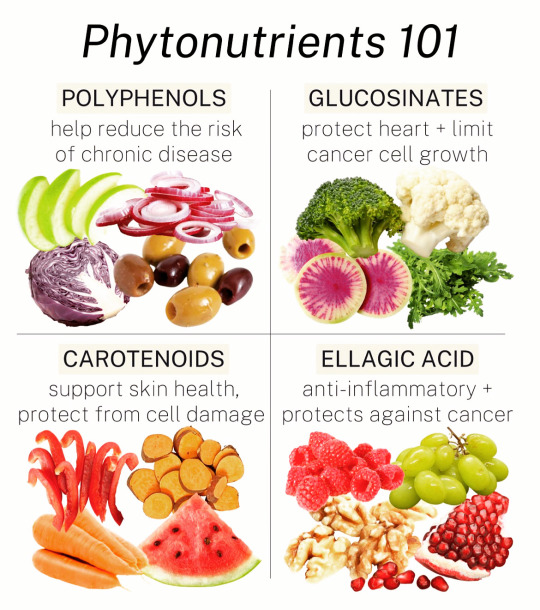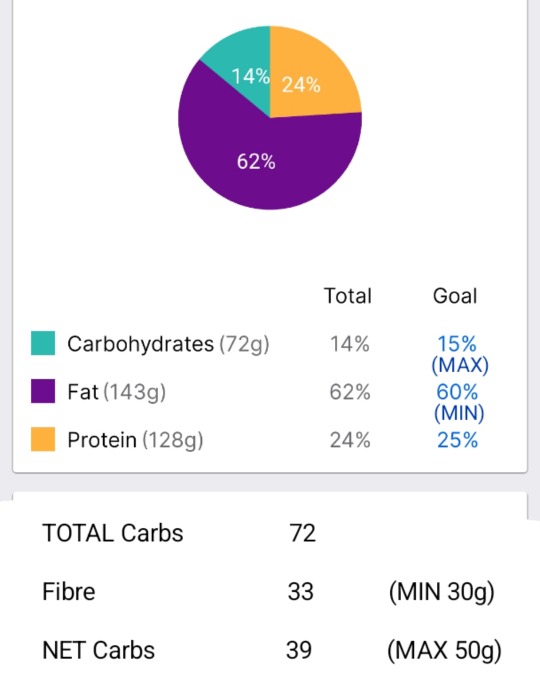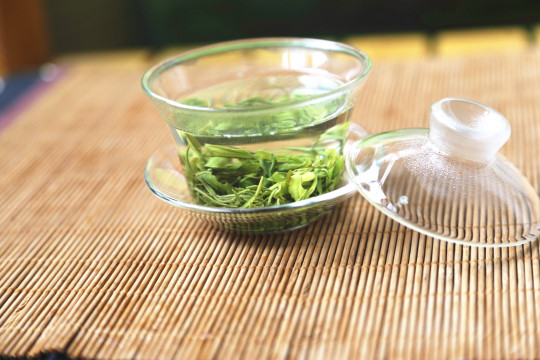#polyphenole
Explore tagged Tumblr posts
Photo

Schützt Apfelsaft vor Darmkrebs?
An apple a day, keeps the doctor away! Schützt Apfelsaft wirklich vor Darmkrebs? Zumindest präventiv ist Apfelsaft eine hervorragende Idee.
0 notes
Text

.
I'm less here today
fading into an uncertain future
there is more to be harvested than berries
every thing ripens in its own time
without harvest
we rot on the vine
.
62 notes
·
View notes
Text

#nutrition#phytonutrients#polyphenols#disease management#disease prevention#Disease fighting#antiinflammatory#cancerfighting#eat the rainbow
166 notes
·
View notes
Link
Researchers found that a combination of proteins and antioxidants doubles the anti-inflammatory properties in immune cells. They hope to be able to study the health effects on humans.
Whenever bacteria, viruses, and other foreign substances enter the body, our immune systems react by deploying white blood cells and chemical substances to protect us.
This reaction, commonly known as inflammation, also occurs whenever we overload tendons and muscles and is characteristic of diseases like rheumatoid arthritis.
Antioxidants known as polyphenols are found in humans, plants, fruits, and vegetables. This group of antioxidants is also used by the food industry to slow the oxidation and deterioration of food quality and thereby avoid off flavors and rancidity. Polyphenols are also known to be healthy for humans, as they help reduce oxidative stress in the body that gives rise to inflammation.
Continue Reading
147 notes
·
View notes
Text
#Green tea benefits#Best green tea brands#Organic green tea#Green tea antioxidants#Matcha green tea#Green tea for weight loss#Green tea for skin#Green tea antioxidants polyphenols#Japanese green tea#Loose leaf green tea#Green tea caffeine content#Green tea recipes#Green tea detox#Red Tea Keywords:#Rooibos red tea#Red tea health benefits#Caffeine-free red tea#Red tea detox#Red tea for weight loss#Organic red tea#Red tea antioxidants#Rooibos tea vs green tea#Best red tea brands#Red tea for skin#Red tea herbal tea#health & fitness
2 notes
·
View notes
Text










Back home and determined to shake off the recent doldrums.
Long story, but right now my physical health has thrown a real curveball.
Diabetic control - nope. Massive lows now rather than massive highs. But still mostly high.
Mucus thing - off the charts. Seriously.
Sleep - yeah, I've heard of that. Wonder what it's like!
Anyway, I'm easing myself into life as usual.
Short walk (30 mins) at 6am. Followed by a lower body/core home workout.
Then breakfast. My apple, cinnamon and mixed nuts (olive oil and sea salt added). Collagen filter coffee. I've missed my machine while I've been away in the motorhome, lol.
And I'm back to my modified version of ketobiotic.
That's a macro breakdown recommended by Mindy Pelz, who I have read a few books by, and I'm on her FB community group.
She recommends up to 50g net carbs and a minimum of 60% fat. She recommends much less protein than I prefer to have, so that's where the modification comes in.
I am making sure that I include fruit and veg (polyphenols for the win), but I'm not having masses of it.
I'm also trying very hard to keep that fibre up.
I have been using psyllium husk. Excellent thing for adding to my daily diet. I am now trying inulin powder. Another good source of fibre.
I've still got quite a lot of psyllium left, so I've mixed the two together, to get a double benefit, using both at once.
Oh yes, and if you notice the scratches on my leg, that's the fight I had with a very dense part of woodland on my last walk on holiday. Brambles vs me. I call it a draw, because they didn't stop me!
Back to normal 15hr fasting after dinner.
I answered a really nice message here this morning. And I guess today's post is one of those times I'm doing what I talked about in my reply.
This is my individual journey of health. Not every day is fabulous. But neither is every day tough.
Most usually somewhere in between those two markers.
#fitspo#fitspiration#fitblr#fitness#healthy living#health and fitness#fit#workout#fiton#suzieb-fit#health and nutrition#diet and nutrition#healthy nutrition#good nutrition#high fibre diet#high fat diet#polyphenols#healthy food#healthy eating#typeonediabetes#type 1 diabetic#type 1 diabetes
6 notes
·
View notes
Text
Traditional Chinese medicine talks about tea, have you been drinking it correctly?

When I was young, I only knew of two types of tea: "big bowl tea" and "Biluochun" tea. Later, I learned about tea because of studying traditional Chinese medicine and discovering that tea is also a type of medicine. For example, the Chuanxiong tea blend is recorded in the "Essentials of Materia Medica": "Tea leaves have a bitter and sweet taste. They enter the Hand and Foot Shaoyin, Taiyin, and Jueyin meridians. They are effective in clearing the heart and lungs, purging the intestines and stomach. When combined with chamomile, it can treat headaches; when combined with ginger, it can relieve water retention and stimulate the bladder and kidney meridians when consumed after drinking alcohol." However, tea is ultimately cold in nature, and since my body constitution is weak and cold in the spleen and stomach, I remember drinking Pu-erh tea once and having to go to the bathroom halfway through, so I rarely drink tea. But one chance encounter changed my perspective.
Recently, I went to visit a small shop near the Wudaoying Hutong next to the Beijing Yonghegong Temple. The shop owner is a good friend of mine who invited me to try Biluochun tea. This is a type of green tea, and at the time it was dinner time, so how could I dare to drink green tea on an empty stomach? So I politely declined. But my friend said, "Just take a sip, I guarantee it won't be too cold." She said that this tea comes from an 80-year-old tea tree growing on a sunny mountain in Dongting Lake. This is the first crop of early spring tea picked by hand and processed with firewood, so it is not like other green teas. Unable to resist her persuasion, I sat down and tasted the Biluochun tea. After drinking a few cups, I was surprised to find that my stomach and intestines felt slightly warm and comfortable, with no signs of diarrhea. I let out a few belches and felt quite comfortable, and even had a slight feeling of fullness. I stayed until 8pm, drinking the tea on an empty stomach, without any discomfort, and even feeling slightly full without hunger. The warm tea entered my stomach and I broke out into a light sweat, feeling very comfortable. Later, my friend gave me some Biluochun tea, and every time I drank it, I felt the same way, so it seems to be no coincidence.
This chance encounter changed my understanding of tea, especially green tea, and reminded me of an elderly person who once said that his father, who was over ninety years old, had been drinking tea his whole life and lived a long and healthy life, as did many other elderly people. At first, I thought it was due to their physical constitution, but now I see it's not entirely the case. Recently, I've been thinking carefully and have had some realizations.
Although the nature of tea is generally cool, ultimately its temperature can be influenced by two factors: first, the growth environment, whether it is in a relatively yin, cold, and humid area or a warm and sunny one. Just like the difference between grapes grown in the north of China and those grown in Xinjiang, or the difference between two types of Chinese medicinal herbs called niuxi: Sichuan niuxi promotes blood circulation, while Henan niuxi nourishes the liver and kidneys. Similarly, ginseng grown in the northeast is warm in nature, while American ginseng is cooler. These differences in nature are due to their different growing environments, including temperature, sunlight, soil, and planting methods.
Second, the processing methods are also important. Most teas need to be withered and then undergo a process called "kill-green," which involves roasting with fire. Traditional Chinese medicine believes that medicinal herbs and raw herbs that have been processed by fire have different cold, hot, warm, or cool properties. For example, raw licorice has a cold and cool nature that can clear away heat and detoxify, while roasted licorice can tonify the spleen and supplement qi. Raw rehmannia has a cool nature that can cool and activate blood, while steamed rehmannia has a slightly warm nature that can nourish the kidneys. Most herbs that have been processed by fire tend to have some warm properties, depending on the specific method of fire processing, which can even vary between using firewood or an oven.
There are many steps involved in tea processing, and many of them involve using fire, either by roasting or steaming. The tea processing method determines the warmth or coolness of the tea. I used to think that fermented teas, such as black tea and Pu-erh tea, were not cool, but that was because I didn't understand the fermentation process of tea. Tea fermentation is usually done by spreading the tea leaves flat and letting them sit at room temperature of around 25 degrees Celsius, so it's different from using fire. Therefore, to sum up, the warmth or coolness of tea depends on the environment and processing method.
In light of this, people with a cold constitution are not necessarily unable to drink green tea, while some fermented teas, such as Pu-erh tea, may not be suitable. Therefore, finding the right tea for oneself and knowing the principle of moderation is the key to health.
Author: Zhang Dong, Chief Physician of the Cardiovascular Department at Xiyuan Hospital, China Academy of Chinese Medical Sciences.
#tea#green tea#chinese tea#white tea#qiandao silver needle tea#spring tea#organic tea#tea polyphenols#black tea#caffeine#Tea leaves#Tea processing#Health preservation#Traditional Chinese medicine#Biluochun#The principle of moderation#Environmental factors#Processing method
7 notes
·
View notes
Text
like idk ferobe girls have tapped into the real wave conjugations of the universe in a way most of us simply have yet to match.
#Polyphenols 4 chap ferobe fic ?? changed my life.#I know. i sound insane. ferner has maybe a 5 min clip worth of lines#but hes literally the only person who actually likes being around oberstein#the novel saying he canonly gets a thrill out of fucking w oberstein verbally ….#and reinhard’s whole reason for taking him in was to be oberstein’s leash!! his swift acting poison#& when the girls be makin ferobe yuri??? perfect#But not dnt ferner ewwww its gotta be two old ladies
4 notes
·
View notes
Text
FOOD SCIENCE
Acid reactions affect chlorophyll. Acid released from veggies when cooking. Chlorophyll converts to pheophytin in acidity. Occurs when green veggies are left on steam table for too long (turns olive green).
Alkaline reactions convert chlorophyll to chlorophyllin.
Alkalinity softens cellulose (e.g. adding baking soda to green beans or green veggies will make them mushy, but they turn bright green). Water soluble vitamins lost in alkaline solution.
Yellow and orange pigments due to carotenoids. Carotenoids insoluble in H2O. Very little effect on carotenoids in alkaline and acidic solutions.
Lycopene (also an antioxidant) responsible for red pigments in tomatoes and watermelon.
Flavonoids: anthocyanins (e.g. cranberries), anthoxanthins
Red, blue, and purple pigments due to anthocyanins. Anthocyanins are soluble in H2O, turn bright red in acid solution, and blue-ish in alkalinity.
White pigments are due to anthoxanthins, which are water soluble, colorless when slightly acidic, and yellow in alkalinity.
Onions may turn yellow when cooked in an aluminum pan.
Grading of canned foods done by the USDA.
#dietetics#alkalinity#acidity#food science#phytochemicals#anthocyanin#anthoxanthin#polyphenol#lycopene
2 notes
·
View notes
Text
youtube
Honeybees are the world’s most important pollinators, but their population is on the decline — here’s how one Bay Area teen discovered a way to repair the effects of pesticides on honeybees😮🐝
#Bee #Earth #Environment #ClimateCrisis #NowThis
#now this earth#now this#solarpunk#bees#honeybee#Rory Hu#colony collapse disorder#pollinators#bay area#pesticides#pesticide#miticide#San Jose#california#USA#honey#tea polyphenols#tea#caffeine#Broadcom masters#society for science#department of defense#stem talent award#stem#Youtube
7 notes
·
View notes
Text

I forgot my cup of tea last night and this happened
#It's a thin film made of oxidized tea polyphenols and calcium carbonate#Which is why it forms only if you use hard water to brew your tea
3 notes
·
View notes
Text
Adzuki beans and chocolate: Japanese confectionery vs Western confectionery (Essay)

Daifuku-Mochi(Big happy rice cake) with Adzuki beans
Azuki beans(red beans) are indispensable as an ingredient in Japanese sweets. "An(paste)" made from this material is the most important ingredient in various Japanese sweets. On the other hand, chocolate is used in important parts of Western sweets. It is a showdown between the king of Japanese confectionery and the king of Western confectionery. Now let's compare the nutritional value of the two.
"Azuki beans first."
Red bean products are low in calories
rich in dietary fiber
B vitamins and minerals
Among minerals, it is rich in iron and potassium. Iron is the main component of hemoglobin in red blood cells, and lack of iron prevents oxygen from reaching the extremities sufficiently, resulting in anemia. Even compared to spinach, which is known for its high iron content, one daifuku can provide more than twice as much iron as one serving of boiled rice. The best way to prevent high blood pressure is to refrain from salt intake, but it is also important to take a lot of potassium and balance it with sodium. Bananas are representative of foods rich in potassium, but adzuki beans contain four times that amount, and even after boiling, they have more potassium than bananas.
good amino acid balance
Strongest Antioxidant Activity - Red Bean Polyphenols
Reactive oxygen is said to be a factor in lifestyle-related diseases, aging, and diseases such as cancer. Adzuki beans contain nearly twice as much polyphenol as red wine, a component that removes this active oxygen. Adzuki beans have a particularly high polyphenol content among legumes, and Hokkaido-produced adzuki beans have higher polyphenol content than imported adzuki beans, and among Hokkaido-produced adzuki beans, normal azuki beans have higher activity than Dainagon.
It's pretty good. Then chocolate.
What ingredients are in chocolate? "Here are the ingredients that are good for your health."
@Polyphenol
Cocoa, which is the raw material of chocolate, contains plenty of polyphenols.
@Theobromine (meaning God-given)
Stimulates the brain to improve concentration, memory, and thinking power. There is also an action to adjust the autonomic nerve, so you can also expect a relaxing effect. This is why eating chocolate makes you feel relieved when you are tired.
@ Glucose
@oleic acid
@GABA
Cava, whose official name is γ (gamma)-aminobutyric acid, exists widely in the bodies of animals and plants, and is also included in cacao, the raw material of chocolate. It is a neurotransmitter that exists in the human brain and is a type of amino acid that is said to help with relaxation.
@Vitamins and minerals
It's also pretty good. There are many things in common, such as high mineral content and excellent polyphenol content, but in the overall evaluation, chocolate seems to have a slight advantage. But I think adzuki bean is also an excellent food. Adzuki beans also contain vitamins such as vitamin E, vitamin K, niacin, and folic acid.
Word of the day: Depending on how you look at it, sweets can also be an excellent medicinal dish. It is said that during WW2, the US military gave fighter pilots chocolate, and the Japanese military gave them yokan to prevent brain fatigue.
#Adzuki beans#red beans#chocolate#confectionery#nutritional value#iron and potassium#Polyphenols#Theobromine#GABA#sweets#WW2#prevent brain fatigue#essay#rei morishita
5 notes
·
View notes
Text
Polyphenols Market Size, Share, Growth and Trends Report
0 notes
Text
Artificial food additives and sweeteners: how they mix up gut guests, metabolism and the risk for intestinal cancer
The effects of food additives on gut mucosa have been an area of growing concern and research, given their pervasive use in processed foods and potential implications for gut health and colorectal cancer. Food additives encompass a wide range of substances, including emulsifiers, artificial sweeteners, preservatives, colorants and thickeners. The interaction between these additives, gut…
#carboxymethylcellulose#carcinogenesis#chronic inflammation#colorectal cancer#DNA damage#fermented foods#flavonoids#food additives#gut mucosa#microbiota#oxidative stress#polyphenols#polysorbate-80#prebiotics#probiotics#protein kinase#reactive oxidant species#saccharin#short chain fatty acids#sucralose#Toll receptor
0 notes
Text
Polyphenols in Olive Oil: What They Are and Why They Matter

What Are Polyphenols? Polyphenols are plant compounds that help protect the body’s cells from damage caused by free radicals. Olive oil contains several types of polyphenols, including hydroxytyrosol and oleuropein, which play a key role in maintaining health. These substances not only help in cell protection but also improve overall well-being by reducing the risk of cardiovascular diseases and inflammation.
Polyphenols represent a group of over 800 different compounds found in plants, responsible for their color, taste, and aroma. The bitterness in olive oil, often found in high-quality extra virgin oils, is a sign of the presence of polyphenols that provide numerous health benefits. While many people may perceive this bitterness as a drawback, it actually indicates the quality of the oil and its potential health benefits.
Health Benefits of Polyphenols
Antioxidant Action: Polyphenols neutralize free radicals, preventing oxidative stress — a process that can lead to chronic diseases and aging. Regular consumption of olive oil high in polyphenols reduces the risk of various diseases, including cancer and cardiovascular issues.
Anti-Inflammatory Effects: Polyphenols help reduce inflammatory processes in the body, which is especially important for preventing chronic conditions such as arthritis and diabetes.
Heart Support: The polyphenols in olive oil contribute to improved cardiovascular health. They help lower “bad” cholesterol levels and normalize blood pressure, reducing the risk of heart diseases.
Brain Health: The antioxidants in polyphenols protect brain cells, supporting cognitive functions and decreasing the likelihood of developing neurodegenerative diseases like Alzheimer’s.

Olive oil, especially rich in polyphenols, is a valuable product for maintaining health. Including it in your daily diet helps protect the body from numerous diseases, improves heart and vascular health, and slows down aging processes.

0 notes
Text
Unlocking Longevity: Anti-Aging Foods to Incorporate Now
Here’s a revised and formatted version of the article incorporating your tips for an engaging online presentation: Unlocking Longevity: Anti-Aging Foods You Should Start Eating Now Imagine living longer, but with a body and mind that remain youthful, vibrant, and resilient. What if the secret to that vitality lies not in expensive treatments, but in the everyday foods you consume? A growing…

View On WordPress
#chocolate is good for you#health benefits of polyphenols#is wine good for you#phtyochemicals keep you young#phyto chemicals for the win
0 notes